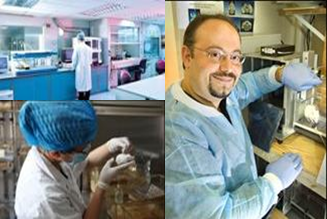消化在线: 氨基水杨酸抑制调节细胞间黏附
来源:

KhareV, LyakhovichA, DammannK, et al. BiochemPharmacol. 2013 Jan 15;85(2):234-44. doi: 10.1016/j.bcp.2012.10.026. Epub 2012 Nov 9
溃疡性结肠炎是一种以结肠慢性炎症为特征的疾病。目前为止,关于5-氨基水杨酸细胞和分子作用机制,及其对肠道稳态和肿瘤进展的作用尚未完全明确。我们希望能通过测试不同基因背景的CRC细胞株,从而找出5-ASA的影响的分子通路;并且以微矩阵检测经5-氨基水杨酸治疗和未治疗细胞(HCT116和HT29)的基因表达谱。数据筛选和分析后,我们识别出3个5-ASA干扰的致瘤通路:蛋白激酶/细胞外信号调节激酶(MAPK/ERK)通路、细胞粘着、β连环蛋白(β-catenin)/Wnt信号通路。而PAK1是上述通路中,5-ASA的一致靶点。因此我们进一步研究了5-ASA对细胞粘附的作用。细胞粘附分析和跨细胞电阻测量后,均发现5-ASA增强了细胞粘附。
另外,5-ASA治疗保存了粘附分子上皮钙粘蛋白和β-连锁蛋白的膜表达。体内外试验均证实PAK1为美沙拉秦活性的中介物;而核糖核酸干扰抑制PAK1也能增加细胞粘附。PAK1表达在腺瘤性息肉病(min)息肉上有所增加,5-ASA治疗使其表达下降。这些数据显示美沙拉秦在调节细胞粘附以及PAK1在腺瘤性息肉病(min)方面的药理作用机制。我们认为,5-ASA可以抑制PAK1表达,从而阻止结肠癌的进展。另一方面,粘附蛋白膜转位机制可能独立于5-ASA已知的抗炎作用。
Mesalamine modulates
intercellular adhesion through inhibition of p-21 activated kinase-1.
Mesalamine (5-ASA) is widely used for the treatment
of ulcerative colitis, a remitting condition characterized by chronic
inflammation of the colon. Knowledge about the molecular and cellular targets
of 5-ASA is limited and a clear understanding of its activity in intestinal
homeostasis and interference with neoplastic progression is lacking. We sought
to identify molecular pathways interfered by 5-ASA, using CRC cell lines with
different genetic background. Microarray was performed for gene expression
profile of 5-ASA-treated and untreated cells (HCT116 and HT29). Filtering and
analysis of data identified three oncogenic pathways interfered by 5-ASA:
MAPK/ERK pathway, cell adhesion and β-catenin/Wnt signaling.
PAK1 emerged as a consensus target of 5-ASA,
orchestrating these pathways. We further investigated the effect of 5-ASA on
cell adhesion. 5-ASA increased cell adhesion which was measured by cell
adhesion assay and transcellular-resistance measurement. Moreover, 5-ASA
treatment restored membranous expression of adhesion molecules E-cadherin and β-catenin. Role of PAK1 as a mediator of mesalamine activity was validated in vitro and in
vivo. Inhibition of PAK1 by RNA interference also increased cell adhesion. PAK1
expression was elevated in APC(min) polyps and 5-ASA treatment reduced its
expression. Our data demonstrates novel pharmacological mechanism of mesalamine in modulation of cell adhesion and role
of PAK1 in APC(min) polyposis. We propose that inhibition of PAK1 expression by
5-ASA can impede with neoplastic progression in colorectal carcinogenesis. The
mechanism of PAK1 inhibition and induction of membranous translocation of
adhesion proteins by 5-ASA might be independent of its known anti-inflammatory
action.